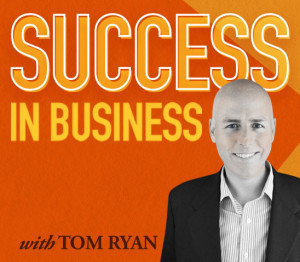 When you’re running a startup or a small business, every dollar counts. This is particularly true when it comes to your marketing budget. There have never been more ways to reach potential customers, and there have never been more companies vying for your advertising dollar. Between old media advertising (print, TV and radio) and new media advertising (online display ads, AdWords, video marketing), it’s easy to get overwhelmed by the options.
When you’re running a startup or a small business, every dollar counts. This is particularly true when it comes to your marketing budget. There have never been more ways to reach potential customers, and there have never been more companies vying for your advertising dollar. Between old media advertising (print, TV and radio) and new media advertising (online display ads, AdWords, video marketing), it’s easy to get overwhelmed by the options.
It’s also easier than ever to get lost in the weeds. So let’s take a step back, and talk about the fundamental problem that advertising aims to solve. For most companies, the deeper question really isn’t “What’s the best way to spend my advertising budget?,” but rather “How can I drive more sales to my business?”
As a small business owner or entrepreneur, making sales is how you feed yourself and possibly your family. There are countless places to spend your ad dollars, but the only places that matter are the ones that bring you new customers. Every advertising decision you make should be informed by the need to bring in new sales.
What about those two buckets of old media and new media? Is old media a waste of money? Is new media all hype? As you might have already guessed, it’s not that simple.
Let’s talk about old (or “traditional”) media for a moment. Old media is a catch-all phrase for the marketing channels and platforms of the pre-digital age. It includes things like newspaper and magazine advertising, TV and radio advertising, billboards and Yellow Pages advertising in phone books. If you’re in your 20s, several of these channels already seem hopelessly dated, but they can still be an effective means for generating sales in the right context.
The flip side of the coin is new media, which is a product of the digital era. This usually means things like display ads on websites, targeted mobile advertising, pre-roll ads on YouTube, social media marketing, and even less obvious things like podcast sponsorships. New media advertising can also have interactive elements, like call-to-action buttons, allowing a level of two-way communication.
Interestingly, there isn’t always a huge difference between old and new media in terms of effectiveness. The biggest difference between the two is actually how trackable the data is. With a print, TV or radio ad, the effectiveness of your advertising is less obvious. You only know of someone called you or came into your business thanks to an old media ad campaign if they tell you. If you want to find out how people heard about your business, it means you have to ask them, “how did you hear of us?”. In the old media model, gathering customer data means putting in more work.
Online media, meanwhile, can tell you exactly how someone arrived at your website. Not only is there more data to work with, there are many more tools to help you interpret that data. You can track impressions, clicks, conversions and countless other metrics. Not only can you send a marketing email to your entire list, you can see how many of those emails were opened, and how many of those readers clicked through on your call-to-action. Even more impressively, this data can be fed into powerful reporting tools, allowing you to discover trends while visually interacting with the data.
While there are some technologies that can help to bridge that gap, like phone systems that can track caller locations, in general it’s much more difficult and expensive to gather data using old media advertising methods. But don’t be too quick to count old media out. New media may make it easier to track your results, but it’s also limited in a pretty big way. If someone isn’t online, it can’t reach them at all.
There are plenty of people, particularly those from the pre-internet generation, who can’t be reached by new media advertising. If your business caters to that market, you’re not going to see great results from an online ad buy. These are people who still watch TV, still listen to the radio, still read magazines, and still notice billboards when they drive by them.
This brings us back to that fundamental question: “How can I drive more sales to my business?”
The only way to answer that question is to know who your likely customers are, and where you have the best chance to reach them. The answer might not be an obvious one, and to get a clear picture you might need to test a few different channels. This brings us to A/B testing, one of the most powerful tools in the marketing world, which I’ll be covering in part two.
